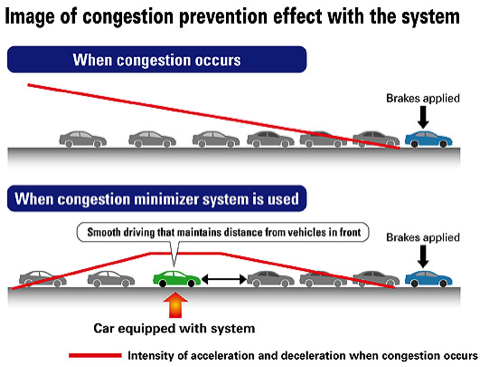Last month, the National Transportation Safety Board listed mandatory adaptive cruise control and other collision-avoidance technologies as one of its ten most wanted safety improvements in 2013. Such a mandate, the NTSB estimates, could reduce highway fatalities by 50 percent.

Honda’s illustration of how adaptive cruise control can reduce congestion. In normal traffic, when a lead vehicle slows down, everyone else must slow and usually slows a little more for safety reasons, thus leading to stop-and-go traffic. If one vehicle in the middle of a platoon has adaptive cruise control, it won’t slow as much, interrupting the pulse of congestion.
Research has shown that adaptive cruise control can also significantly reduce congestion by interrupting the “pulses” of slow traffic that takes place when someone hits the brakes, even if only briefly, on a crowded highway. The research suggests congestion will significantly decline if only 20 to 25 percent of vehicles on the road are using adaptive cruise control. tHowever, researchers fret that too few vehicles are being made with adaptive cruise control to have an impact on congestion in the near future.







